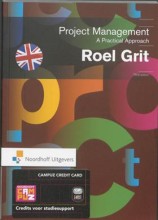Five canonical clause structures
5 important questions on Five canonical clause structures
What are the canonical clause structures based on Complement types?
- Intransitive: They disappeared. (S-P)
- Complex-Intransitive: They were ecstatic. (S-P-PC s)
- Monotransitive: They bought a house. (S-P-O d)
- Complex-Transitive: They kept it warm. (S-P-O d -PC o)
- Ditransitive: They sent her some flowers. (S-P-O i -O d)
How do we distinguish between intransitive and transitive clauses?
1. Objects:
- Intransitive: no Object
- - Monotransitive: one Object
- - Ditransitive: two Objects
- Ordinary: no Predicative Complement
- - Complex: contains Predicative Complement
How do verb classifications relate to clause constructions?
- Intransitive Verb: e.g., DISAPPEAR
- Complex-Intransitive Verb: e.g., BE
- Monotransitive Verb: e.g., FIND (as in "We found the key")
- Complex-Transitive Verb: e.g., FIND (as in "We found her co-operative")
- Ditransitive Verb: e.g., FIND (as in "We found her a job")
- Higher grades + faster learning
- Never study anything twice
- 100% sure, 100% understanding
Which factors must be considered when studying clause structures?
1. Presence or Absence of Objects:
- Intransitive: no Object
- - Monotransitive: one Object
- - Ditransitive: two Objects
- Ordinary clauses: no Complement
- - Complex clauses: have Predicative Complement
What are the implications of verbs belonging to multiple clause classifications?
- Versatility in Usage: A single verb can function differently.
- Example Verb: FIND appears in:
- Monotransitive: "We found the key."
- - Complex-Transitive: "We found her co-operative."
- - Ditransitive: "We found her a job."
The question on the page originate from the summary of the following study material:
- A unique study and practice tool
- Never study anything twice again
- Get the grades you hope for
- 100% sure, 100% understanding






























